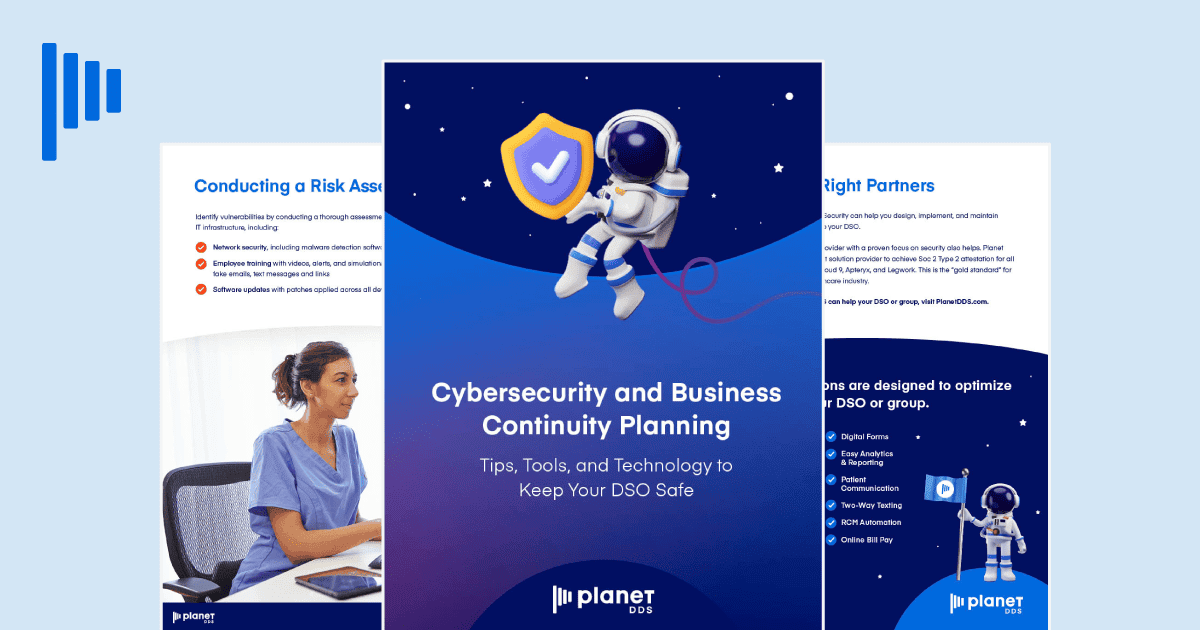Three Predictions That Impact Dentists in 2021

And three strategic steps to elevate your practice in the new year
WENATCHEE, Wash., Jan. 4, 2021 /PRNewswire/ — Every 365 days, we pause, consider the year behind us, and anticipate the year ahead. As we reflect now, nothing’s ever looked quite like this. And dentists continue to deal with historical shifts in healthcare with little precedent to lean on. Dental practices ground to a halt in March with mandatory restrictions on elective procedures after a strong start to the year. This historical period led to slow re-openings and loosening of some limitations, but in the most recent American Dental Association (ADA) surveys, practices on average continue to report 80% of previous patient volumes. As COVID-19 cases spike again, unprecedented disruption, anxiety, and loss leave us with uncertainty to start 2021.
The ADA’s Health Policy Institute (HPI) found dental care spending down 38% in 2020, and they project a 20% reduction in 2021. Dental practices need to make strategic, measured decisions soon to navigate through the remaining pandemic. The new year demands calculated adjustments that reassure and attract patients to offset the inevitable attrition brought on by COVID-19.
No one knows what the future holds. But as we study the past and evaluate trends, the following predictions stand:
PREDICTION #1: Dental practices, especially solo practices, will feel extra strain to retain patients and replace churn.
The HPI has tracked consumer sentiment on dental care for the past several months. Every two weeks, the survey connects with people who visited a dental practice in 2019 and gathers their opinion about visiting again. Results in November 2020 revealed the following:
- 23% were recently active patients who have already been back to the dentist
- 60% are ready to go to their dentist when their next appointment arrives
- 5% are still seeking assurances and may need a little extra signal that it’s safe before they’ll return for their dentist visit
- 12% are waiting to get a vaccine before returning for treatment
The dental industry blends immediate and elective care, which helps maintain a baseline level than many other industries envy. For example, nearly three times as many people report they won’t resume traveling until a vaccination becomes available. But the implications still carry negative weight as 17% of patients express a hesitation to continue dental care.
Economic uncertainty may alter dental expenditures, even for patients who can afford care, however. The personal savings rate hit a record 33% as consumers stockpiled cash during the pandemic; reluctant spending will continue to shape consumer sentiment in the near-term. Practices also face patients who’ve lost their dental insurance benefits associated with vanishing jobs. Patients may delay dental care until their insurance situation and the general economy improves.
Some people who lose coverage may be eligible for Medicaid. But not all states have dental benefits for adults, and 29 states offer only emergency or limited benefits. Consequently, the benefits for those who are unemployed won’t equal previous employer benefits. Many practices don’t accept Medicaid, so these patients may drop out of the private-pay system.
PREDICTION #2: Staffing shortfalls will continue to impact the dental industry.
The human resource impact of COVID-19 carries into dental offices. Many employees continue to manage remote schooling for their children and juggle childcare loss during working hours. Dental offices face challenges recruiting the right people to fill critical positions in every economic cycle. A strong job market fueled a simmering staffing crisis before COVID-19, but the pandemic accelerated the strain. Additionally, solo dentists’ offices and DSOs rely on full-time employees who possess specific skills and certifications.
According to the ADA, hiring during 2020 for any position in practices hasn’t been without stress. The majority of hiring dentists report that it’s been extremely or very challenging compared to before the pandemic. Nearly 80% reported it was extremely or very challenging to recruit hygienists, and roughly 70% said the same for assistants.
An inconsistent workflow disrupted by shutdowns and restrictions presents another hurdle for dental practices to overcome. Stress-driven dental problems have increased, including TMJ and broken teeth. Emergency visits related to stress and delayed care present another challenge that may accelerate the longer the pandemic goes.
PREDICTION #3: Teledentistry will gain more traction.
The telehealth revolution came into 2020 at a steady pace. Visits were up 33% before the pandemic, but they escalated as patients sought contactless communication channels. Teledentistry lowers the barrier to care, providing patients with direct access to their dentist from the comfort of their own homes without necessitating a physical visit. In a procedure-based profession, teledentistry plays a limited role. But patients can ask questions, perform some post-op visits, provide smile consultations, and review treatment plans. Practices can bill for the visit and collect reimbursement while keeping patients and staff safe.
Innovate practices began offering teleconsults to help patients during the mandatory shutdown in the spring of 2020. COVID-19 forced the accelerated adoption of teledentistry with creative solutions to patient communication. Teledentistry provides significant benefits to at-risk populations for COVID-19, including older people and those with pre-existing conditions. Plus, over 80% of patients report high satisfaction with virtual visits in at least four recent studies. These findings bode well for the future of this trend. More dentists will adopt virtual consults as an extension of their practices in 2021, and patients and staff will discover more efficient access to care.
RECOMMENDATIONS for 2021
Communicate regularly with patients.
Dentists are often concerned about inundating patients with too many digital communications. But don’t be afraid to over-communicate with your patients in 2021. Establish systems that identify and manage communication channels preferred by patients through texting, email, social media, chatbots, and phone calls. Make sure you build “safety first” language into your messaging to let your patients know about the precautions you’re taking for their wellbeing.
Offer your patients and staff convenient, touchless options.
Safety and comfort remain the number one priority for your patients. Every step your team takes to ensure a safe environment improves the patient experience and your brand story. Plus, offering touchless ways to interact with your team enhances their desire to schedule appointments. Incorporate tools such as online appointment booking, paperless forms, and a pre-appointment comfort survey to help match the user experience found in other industries.
Digital tools also add efficiency and leverage your staff’s time. The need has never been greater as practices juggle recruitment challenges with more patient engagement demands. Every task integrated into a digital workflow frees your team to focus on primary care. Including these vital components can add hours to your team’s availability, reduce stress, and deliver first-class service.
Attract new patients in 2021.
In 2021, practices will expend more energy attracting new patients and nurturing existing relationships. Most practices will experience economic impacts in navigating the next phase of COVID-19. Address this challenge by taking action now to meet consumer psychology with smart tools. Develop a strategic plan that anticipates new obstacles and recognizes the opportunity to stand out from the crowd.
Consumers will choose those practices that provide the safe, convenient, and genuine experience they want. Consider an all-in-one Patient Relationship Management (PRM) solution that integrates to your Practice Management Software (PMS). Keep your current patients engaged, attract new patients, and help your staff deliver service that they’re proud to give.
Byline: Dr. Greg Grillo, DDS with Grillo Robeck Dental in Omak, Washington and Korey Korfiatis, Co-founder and Co-CEO of Legwork
About Legwork
Legwork delivers happiness to 20 million dental patients across North America via all-in-one engagement software. Integrating with dental practice management software, Legwork executes dozens of complex tasks, so dental teams don’t have to. Legwork helps streamline the front office, attract new patients, and keep seats filled via our easy-to-use web-based dashboard. From engaging prospects looking for their next dentist to reactivating dormant patients, Legwork covers the entire dental patient journey. Learn more at www.legwork.com
Media contact:
Rachel McKelvey [email protected] (509) 888-0233
This press release was originally published on CISION PR NEWSWIRE .



